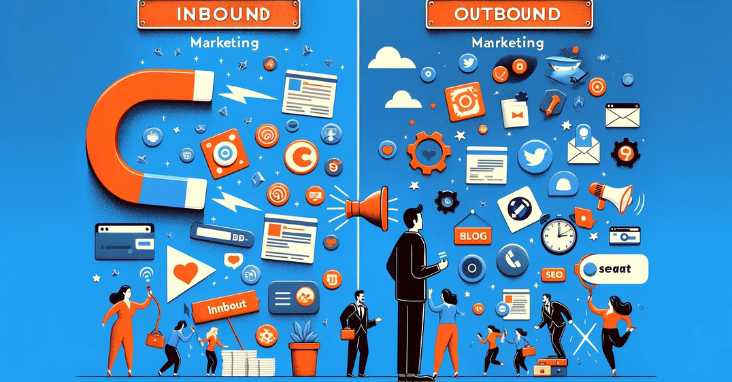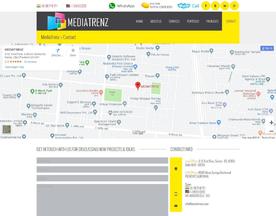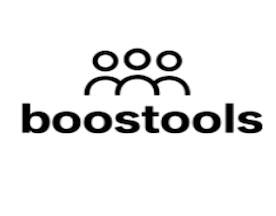What is the difference between inbound vs outbound marketing? Inbound marketing attracts customers with valuable content and interactions, while outbound marketing pushes messages to a broader audience.
In today’s digital age, marketing has become more complex and sophisticated than ever before. With the rise of social media, search engines, and other digital channels, businesses have more options than ever when it comes to promoting their products and services. Two of the most popular marketing strategies are inbound vs outbound marketing. Inbound marketing focuses on attracting customers through content creation and other forms of engagement, while outbound marketing involves reaching out to potential customers through advertising and other forms of promotion.
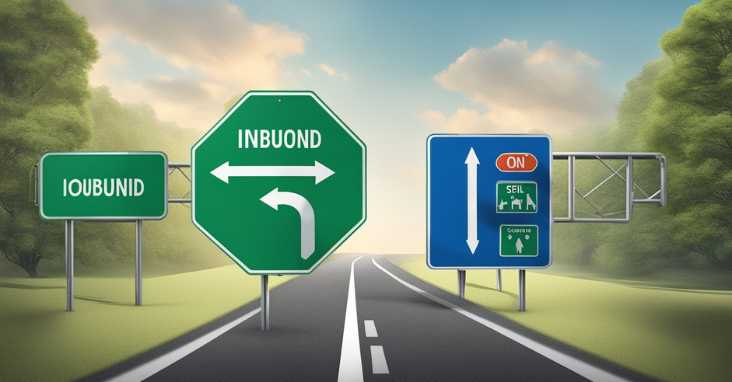
Understanding the differences between inbound vs outbound marketing is crucial for any business looking to develop a successful marketing strategy. While both approaches have their strengths and weaknesses, each can be effective in different situations. Inbound marketing is often seen as a more customer-centric approach, as it involves creating content and other forms of engagement that are designed to appeal to customers’ interests and needs. Outbound marketing, on the other hand, is often seen as more sales-focused, as it involves reaching out to potential customers directly with advertising and other forms of promotion.
Key Takeaways
- Inbound marketing focuses on attracting customers through content creation and engagement, while outbound marketing involves reaching out to potential customers through advertising and other forms of promotion.
- Both inbound vs outbound marketing have their strengths and weaknesses, and each can be effective in different situations.
- Understanding the differences between inbound vs outbound marketing is crucial for any business looking to develop a successful marketing strategy.
Understanding Inbound Marketing
Defining Inbound Marketing
Inbound marketing is a marketing strategy that focuses on attracting potential customers to a business by creating valuable and informative content. It is a customer-centric approach that aims to engage and educate prospects rather than interrupting them with unwanted advertising.
In contrast to outbound marketing, which involves pushing marketing messages to a broad audience, inbound marketing is all about drawing in qualified leads who are already interested in what a business has to offer. By providing relevant and helpful content, businesses can attract potential customers who are actively searching for solutions to their problems.
Strategies for Inbound Marketing
There are several strategies that businesses can use to implement an effective inbound marketing campaign. These include:
- Search Engine Optimization (SEO): By optimizing their website and content for relevant keywords, businesses can improve their search engine rankings and attract more organic traffic.
- Content Marketing: Creating educational and informative content such as blog posts, ebooks, and webinars can help businesses establish themselves as thought leaders in their industry and attract potential customers.
- Social Media: Engaging with prospects on social media platforms can help businesses build trust and credibility with their audience.
Benefits of Inbound Marketing
Inbound marketing offers several benefits over traditional outbound marketing methods. For one, it is a more cost-effective approach, as businesses can attract qualified leads without having to spend a lot of money on advertising. Additionally, inbound marketing is a targeted approach that focuses on engaging with prospects who are already interested in a business’s products or services, leading to higher engagement and conversion rates.
By providing valuable content and engaging with prospects on a personal level, businesses can build trust and credibility with their audience, leading to long-term relationships and repeat business.
To learn more about inbound marketing, check out this external resource.
Understanding Outbound Marketing
Defining Outbound Marketing
Outbound marketing, also known as traditional marketing, is a method of marketing where businesses initiate contact with potential customers through various channels such as television, radio, billboards, telemarketing, print ads, and direct mail. The goal of outbound marketing is to reach a broad audience and generate immediate results.
Strategies for Outbound Marketing
The strategies used in outbound marketing include interrupting the audience’s attention with ads, cold calling, and direct mail. These strategies are designed to catch the audience’s attention and convince them to take action. Outbound marketing is often associated with a high volume of messages and a low response rate.
Benefits of Outbound Marketing
Outbound marketing can be beneficial for businesses looking to build brand awareness and reach a broad audience quickly. Outbound marketing can also be effective in generating immediate results, making it an attractive option for businesses looking for a quick return on investment.
However, outbound marketing can also be expensive and may not be as effective as inbound marketing in generating long-term results. Outbound marketing is often seen as an interruption to the audience’s attention, which can lead to a negative perception of the brand.
To learn more about outbound marketing, visit HubSpot’s article on outbound marketing.
Overall, outbound marketing can be an effective tool for businesses looking to generate immediate results and build brand awareness. However, it is important to consider the potential drawbacks and to balance outbound marketing with inbound marketing strategies for a comprehensive marketing approach.
Comparing Inbound vs Outbound Marketing
Inbound vs outbound marketing are two different approaches to promoting a product or service. Inbound marketing is a strategy that involves attracting customers through personalized and targeted content, while outbound marketing is a more traditional approach that involves reaching out to potential customers through advertising and other forms of promotion.
Differences in Strategy and Execution
One of the main differences between inbound vs outbound marketing is the way they are executed. Inbound marketing focuses on creating content that is tailored to a specific audience. This content is designed to be informative and useful to the reader, and is often shared through social media and other online channels. Outbound marketing, on the other hand, involves more traditional forms of advertising, such as television commercials, print ads, and direct mail.
Cost Implications and ROI
Another difference between inbound vs outbound marketing is the cost implications. Inbound marketing is generally considered to be less expensive than outbound marketing, as it relies on creating content that is shared through social media and other online channels. Outbound marketing, on the other hand, can be more expensive, as it often involves paying for advertising space or time on television or radio.
When it comes to ROI, both inbound vs outbound marketing can be effective. Inbound marketing is often seen as more effective in the long term, as it focuses on building relationships with customers over time. Outbound marketing, on the other hand, can be more effective in the short term, as it can generate immediate leads and sales.
Measuring Success
Measuring the success of inbound vs outbound marketing can be done in different ways. Inbound marketing is often measured by conversion rates, which track the number of people who have taken a specific action, such as filling out a form or making a purchase. Outbound marketing, on the other hand, is often measured by the number of leads generated or sales made.
In conclusion, both inbound vs outbound marketing have their advantages and disadvantages. Inbound marketing is often seen as a more targeted and personalized approach, while outbound marketing can be more effective in generating immediate leads and sales. Ultimately, the best approach will depend on the specific needs and goals of the business. For more information on inbound vs outbound marketing, check out this link.
The Role of Content in Marketing

Content plays a crucial role in both inbound vs outbound marketing strategies. In this section, we will explore the importance of content in marketing and how it can be effectively used to engage and inform potential customers.
Content Marketing in Inbound Strategy
Inbound marketing is all about attracting potential customers to your website or social media channels through informative content. Content marketing is a key component of inbound strategy, which involves creating and sharing valuable, relevant, and consistent content to attract and retain a clearly defined audience. This content can be in the form of blog posts, videos, podcasts, case studies, social media posts, and more.
One of the main advantages of content marketing is that it can help improve your website’s search engine rankings. By creating informative content that is relevant to your target audience, you can increase your website’s visibility on search engines like Google. This can help drive more traffic to your website and increase your chances of converting visitors into customers.
Content Creation and Distribution
Creating and distributing high-quality content is crucial for the success of your marketing strategy. When creating content, it’s important to keep your target audience in mind and create content that is both informative and engaging. This can be achieved by using a variety of formats, such as blog posts, videos, podcasts, and interactive content.
Once you have created your content, it’s important to distribute it effectively. This can be done through a variety of channels, such as social media, email marketing, and your website. By using a combination of these channels, you can reach a wider audience and increase your chances of converting visitors into customers.
Overall, content plays a crucial role in both inbound vs outbound marketing strategies. By creating informative and engaging content, you can attract potential customers to your website or social media channels, improve your search engine rankings, and increase your chances of converting visitors into customers.
To learn more about the importance of content in marketing, check out this article by HubSpot.
Leveraging Technology in Marketing

With the advent of the digital age, leveraging technology in marketing has become a crucial aspect of any marketing strategy. Digital platforms, websites, email lists, social media advertising, email marketing, PPC, influencer marketing, banner ads, display advertising, and ad blockers are some of the entities that have revolutionized the way businesses market their products and services.
Digital Marketing Platforms
Digital marketing platforms have become a popular choice for businesses of all sizes. These platforms provide businesses with the ability to manage their marketing campaigns across multiple channels, including social media, email, and search engines. They also offer features such as analytics and reporting, which enable businesses to track the performance of their campaigns and make data-driven decisions.
One such platform is HubSpot, which provides businesses with a suite of marketing, sales, and customer service tools. HubSpot offers features such as email marketing, social media scheduling, and lead tracking, making it a popular choice for businesses looking to streamline their marketing efforts.
The Impact of Ad Blockers
Ad blockers have become a growing concern for businesses that rely on display advertising to reach their target audience. Ad blockers are browser extensions that prevent ads from being displayed on websites, which can significantly impact the effectiveness of a marketing campaign.
According to a report by PageFair, ad-blocker usage increased by 30% in 2023, with an estimated 615 million devices using ad blockers worldwide. This trend has led to businesses exploring alternative advertising methods, such as influencer marketing and sponsored content.
As businesses continue to navigate the ever-changing landscape of digital marketing, it is essential to stay up-to-date with the latest trends and technologies. By leveraging technology in marketing, businesses can reach their target audience more effectively and efficiently, ultimately leading to increased sales and revenue.
Here is an external resource with high authority on digital marketing platforms.
Building and Maintaining Customer Relationships

Building and maintaining customer relationships is essential for any business to succeed in the long run. Inbound vs outbound marketing strategies can be used to engage and nurture leads, delight customers post-purchase, and build customer loyalty.
Engagement and Nurturing Leads
Engagement is the process of building a relationship with potential customers. Inbound marketing strategies such as content marketing, social media marketing, and search engine optimization (SEO) can be used to attract potential customers to a business. Once leads are generated, they need to be nurtured to move them through the sales funnel.
Nurturing leads involves following up with them and providing them with personalized email campaigns and other relevant content. This can be done through omnichannel marketing, which involves using multiple channels to engage with customers. By providing value to potential customers and building trust, businesses can increase the chances of converting them into customers.
Delighting Customers Post-Purchase
Delighting customers post-purchase is a crucial step in building customer loyalty. After a customer makes a purchase, follow-up is essential to ensure their satisfaction. This can be done through personalized email campaigns, surveys, and social media engagement.
Businesses can also use upselling and cross-selling techniques to increase revenue and provide more value to customers. By providing excellent customer service and addressing any issues promptly, businesses can build long-term relationships with customers and increase customer loyalty.
In conclusion, building and maintaining customer relationships is a crucial aspect of any business’s success. By using inbound vs outbound marketing strategies to engage and nurture leads, delight customers post-purchase, and build customer loyalty, businesses can increase revenue and build a loyal customer base. For more information on building customer relationships, check out this helpful resource.
Challenges and Considerations

Overcoming Inbound Marketing Challenges
Inbound marketing can be a powerful way to attract specific audiences and convert them into loyal customers. However, it is not without its challenges. One of the biggest challenges of inbound marketing is that it takes time to build trust and credibility with potential customers. This is because inbound marketing relies on creating valuable content that educates and informs potential customers about your products or services. It can take time to see the results of your efforts, but with patience and persistence, it can pay off in the long run.
Another challenge of inbound marketing is that it can be difficult to identify and target specific audiences. Unlike outbound marketing, which can be directed at a specific list of prospects, inbound marketing relies on attracting potential customers who are already interested in your products or services. This means that your content needs to be optimized for search engine optimization (SEO) and social media sharing so that it can be easily found by your target audience.
Navigating Outbound Marketing Limitations
Outbound marketing, on the other hand, can be a more direct and immediate way to reach potential customers. However, it also has its limitations. One of the biggest limitations of outbound marketing is that it can be seen as intrusive or annoying by some people. Cold calling and cold emailing, for example, can be seen as pushy and unwelcome.
Another limitation of outbound marketing is that it can be difficult to measure its effectiveness. Unlike inbound marketing, which relies on tracking website traffic and conversions, outbound marketing can be more difficult to track. This is because it often involves reaching out to people who may not be actively looking for your products or services.
To overcome these limitations, it is important to focus on creating personalized and targeted outbound marketing campaigns. By identifying pain points and specific needs of your target audience, you can create messaging that resonates with them and increases the likelihood of conversion. Additionally, using tools such as call tracking and email tracking can help you measure the effectiveness of your outbound marketing efforts.
Overall, both inbound vs outbound marketing have their challenges and considerations. By understanding the strengths and limitations of each approach, businesses can create a well-rounded marketing strategy that effectively reaches and converts their target audience. For more information on inbound vs outbound marketing, check out this resource.
Frequently Asked Questions
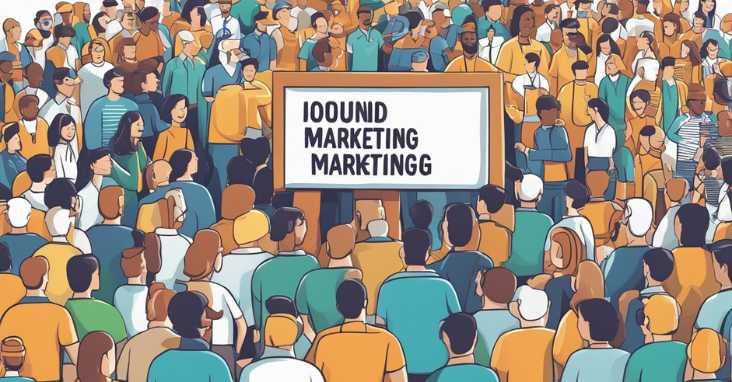
What are the key differences between inbound vs outbound marketing strategies?
Inbound vs outbound marketing strategies differ in their approach to attracting and engaging potential customers. Outbound marketing is a traditional approach that involves actively reaching out to potential customers through methods like cold calling, direct mail, and advertising. In contrast, inbound marketing focuses on creating valuable content that attracts potential customers to a brand, such as blog posts, social media content, and search engine optimization.
How do inbound marketing tactics typically differ from outbound marketing tactics?
Inbound marketing tactics are typically more focused on building relationships with potential customers through content that provides value and addresses their needs. Outbound marketing tactics are more focused on interrupting potential customers with advertising or other forms of outreach. Inbound marketing tactics often involve creating content that can be shared through social media or other channels, while outbound marketing tactics are often more one-way and less interactive.
Can you provide examples of how inbound marketing can generate leads?
Inbound marketing can generate leads in a variety of ways. For example, creating a blog post that addresses a common question or problem in a particular industry can attract potential customers who are searching for answers. Offering a free e-book or white paper in exchange for contact information can also be an effective way to generate leads. Additionally, creating social media content that is engaging and shareable can help to attract potential customers and generate leads.
What are the primary advantages and disadvantages of inbound vs outbound marketing?
The primary advantage of inbound marketing is that it can be more cost-effective and targeted than outbound marketing. By creating content that is specifically designed to attract potential customers, inbound marketing can help to build relationships and generate leads more efficiently than traditional outbound marketing tactics. However, inbound marketing can take longer to produce results than outbound marketing, and it may require a significant investment of time and resources to create high-quality content.
In what ways do inbound vs outbound sales approaches vary?
Inbound sales approaches are typically more focused on building relationships with potential customers and providing them with value throughout the buying process. Outbound sales approaches are more focused on closing deals quickly and often involve more aggressive tactics like cold calling or direct mail. Inbound sales approaches often involve providing potential customers with educational content and resources that help them make informed decisions, while outbound sales approaches may rely more on persuasion and pressure.
How do the goals of inbound marketing contrast with those of outbound marketing?
The primary goal of inbound marketing is to attract potential customers by providing them with valuable content that addresses their needs and interests. The goal of outbound marketing is to reach as many potential customers as possible through advertising or other forms of outreach. Inbound marketing is often more focused on building long-term relationships with customers, while outbound marketing is more focused on generating immediate results.
For more information on inbound vs outbound marketing, check out this article.

